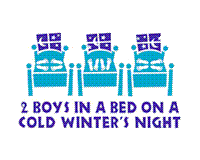As a child, one of the most annoying things my mother ever made me do was requiring me to sit down at the dining room table for the purpose of writing personal thank you notes for gifts received on any occasion. A couple years ago I let my Mom know I had been cursing her as I hand wrote about 25 personal notes to people from the HOW Design Conference who had taken the time to give me advice, took me out dinner or presented me with gifts. Her response was, "I guess someone raised you properly."
The use of the thank you note has been in the news recently. The Web presence CareerBuilder.com conducted a survey of hiring professionals in regards to how their employing decisions were influenced by thank you notes, or other forms of appreciation or acknowledgement, from interviewees.
"Although most hiring managers expect to receive a thank-you note, format preferences differ. One-in-four hiring managers prefer to receive a thank-you note in e-mail form only; 19 percent want the e-mail followed up with a hard copy; 21 percent want a typed hard copy only and 23 percent prefer just a handwritten note," wrote Rosemary Haefner, Vice President of Human Resources for CareerBuilder.com, in her article No Thank You Could Mean No Job.
She added, "No matter which format you choose, it's crucial to act quickly when sending a thank-you letter to your interviewer. Twenty-six percent of hiring managers expect to have the letter in-hand two days after the interview, and 36 percent expect to have it within three to five days. Sending the letter quickly reinforces your enthusiasm for the job, and helps keep you top-of-mind for the interviewer."
The thank you note has a variety of valuable applications.
When David E. Carter publishes a book featuring a designer's work, as a result of one of his design competitions or some other effort, he sends a complimentary copy to the contributor. I've made it a practice to make sure I immediately send a thank you to Carter each time I receive one of his publications to add to my collection. In 2001 I received a copy of his book Blue is Hot, Red is Cool, exhibiting several examples of my logo design work. I sent off a thank you, in email form this particular time. I was stunned when I got Carter's response:
"Thanks for the nice note. You don't know how much I appreciate your taking the time to do so. (I know, you are supposed to send 'thank you' notes; parents all taught us that. But of the 70+ copies of the new book I sent, I have received exactly two 'thank you' notes.) Best wishes."
I couldn't believe that lack of appreciation demonstrated by those in our profession. I do realize that everyone has busy schedules, but it should be a regularly scheduled activity to take time to jot off quick notes to those who have done something worthy of a "thank you." Doing so makes a huge impression on people — and for some reason most people's professional manners just aren't what they once were. I recently had a letterpress blank notecard produced for multiple purposes — including showing appreciation.
"I make it a point to send a thank you note," says King Design Group's Cindy King. "I have specific notecards that I designed for this purpose. It's always a handwritten note."
"We always send a handwritten note of some kind after first meeting with any potential client thanking them for their time and consideration." contributes Gary Dickson of Epidemic Design. "Sometimes it is a card that we have produced but, if not, we are very careful to purchase a unique card that cannot be found in a typical store."
Martha Retallick — "The Passionate Postcarder" — adds, "I have a special 'Thank You' postcard. I try to make it a point to send at least five handwritten 'Thank You' cards per day. No, my handwriting isn't the best, but what better incentive to improve it?"
No matter what form you chose to communicate your thanks, making the effort is a must and the recipient will remember it. All designers — and all business people for that matter — need to make it an element of their daily communication, marketing and promotion efforts.
Article links:
David E. Carter / GraphicBooks.org
Cindy King / King Design Group
Gary Dickson / Epidemic Design
Martha Retallick / Western Sky Communications
*Note: This article originally appeared on the late, great web site Commpiled.com. As the site article archive no longer exists, I am reposting it here. It was also previously posted on bLog-oMotives. Portions of this piece appear in my book, The Savvy Designer's Guide to Success: Ideas and tactics for a killer career."
© 2008 Jeff Fisher LogoMotives







